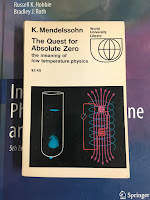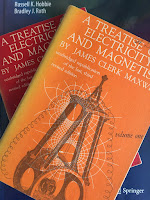The Fourier transform of the projection at angle θ is equal to the two-dimensional Fourier transform of the object, evaluated in the direction θ in Fourier transform space. This result is known as the projection theorem or the central slice theorem (Problem 17). The transforms of a set of projections at many different angles provide values of C and S [the cosine and sine parts of the 2-d Fourier transform] throughout the kxky plane [frequency space] that can be used in Eq. 12.9a [the definition of the 2-d Fourier transform] to calculate f(x,y).I consider the central slice theorem to be one of the most important concepts in medical imaging. How was this fundamental idea first developed? The answer to that question provides a fascinating example of how physics and engineering can contribute to medicine.
Ronald Bracewell first developed the central slice theorem while working in the field of radio astronomy. His 2007 New York Times obituary states
Ronald N. Bracewell, an astronomer and engineer who used radio telescopes to make early images of the Sun’s surface, in work that also led to advances in medical imaging, died on Aug. 12 at his home in Stanford, Calif. He was 86…
With his colleagues at Stanford University in the 1950s, Dr. Bracewell designed a specialized radio telescope, called a spectroheliograph, to receive and evaluate microwaves emitted by the Sun…
Later, in the 1970s, the techniques and a formula devised by Dr. Bracewell were applied by other scientists in developing X-ray imaging of tumors, called tomography, and other forms of medical imaging that scan electromagnetic and radio waves. Dr. Bracewell advised researchers at Stanford and other institutions, but did not conduct laboratory research in the field.
 |
| The Fourier Transform and Its Applications, by Ronald Bracewell. |
The present work began as a pictorial guide to Fourier transforms to complement the standard lists of pairs of transforms expressed mathematically. It quickly became apparent that the commentary would far outweigh the pictorial list in value, but the pictorial dictionary of transforms is nevertheless important, for a study of the entries reinforces the intuition, and many valuable and common types of function are included which, because of their awkwardness when expressed algebraically, do not occur in other lists.The text also does a fine job describing convolutions.
Convolution is used a lot here. Experience shows that it is a fairly tricky concept when it is presented bluntly under its integral definition, but it becomes easy if the concept of a functional is first understood.Many of the ideas that Russ and I present in Chapter 11 of Intermediate Physics for Medicine and Biology are examined in more detail in Bracewell’s book. I recommend it as a reference to keep at your side as your plow through the mathematics of Fourier analysis.
Finally, Bracewell’s view of homework problems, as stated in his Preface to the second edition, mirrors my own.
A good problem assigned at the right stage can be extremely valuable for the student, but a good problem is hard to compose. Among the collection of supplementary problems now included at the end of the book are several that go beyond being mathematical exercises by inclusion of technical background or by asking for opinions.






